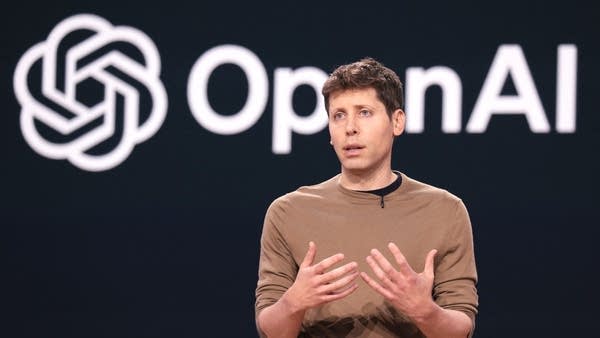ChatGPT now has 400 million weekly users — and a lot of competition
The profusion and popularity of free, open-source models has raised questions about how AI companies can actually profit from their products.

OpenAI said ChatGPT now has more than 400 million weekly active users, up 30% in the last couple of months. The growth comes as chatbot competition has been heating up with the release of highly capable but purportedly much cheaper to build models from Chinese company DeepSeek. The success of those free, open-source models has raised questions about how artificial intelligence companies can sustainably monetize their products and whether they can recoup the billions of dollars invested.
Four hundred million weekly active users is nothing to sneeze at, said Eric Seufert, an independent tech analyst at Mobile Dev Memo.
“But the problem is, consumers are just going to migrate to whichever model or whichever app they feel best serves them,” said Seufert.
About a month ago, DeepSeek topped Apple’s download charts. This week, it’s the latest version of xAI’s Grok. Then there’s Perplexity, Anthropic’s Claude and Google’s Gemini.
Large language models have become a commodity, said Gary Marcus, a professor emeritus of cognitive science at New York University and author of “Taming Silicon Valley.”
“Everybody’s using the same formula to make essentially the same kind of thing, which makes it hard for any of them to say, you know, their product is distinct from anybody else’s,” said Marcus.
Which means companies are likely to compete on price, said Ted Mortonson, tech strategist at Baird.
“You’re going to see a race to zero in the near term,” he said.
Most companies already offer a free tier, and they’ll be under pressure to keep lowering prices for advanced features, said Mortonson.
Last month, OpenAI CEO Sam Altman said on X that the company was losing money, even on its pro subscriptions, which cost $200 a month.
Computing costs should come down as semiconductor efficiency improves, said Doug O’Laughlin at SemiAnalysis.
“As hardware improves, yeah, we see cost downs of like one-tenth, one one-hundredth,” said O’Laughlin.
But consumer chatbot memberships aren’t likely to drive profits for AI companies, said analyst Andy Thurai at Constellation Research. What will is tailoring AI systems for industries that will pay a premium for productivity gains, like health care, law and finance.
“It’s about the business use case and the business problems you solve,” said Thurai.
And, AI companies might also look to make money the way most apps do, with advertising.




